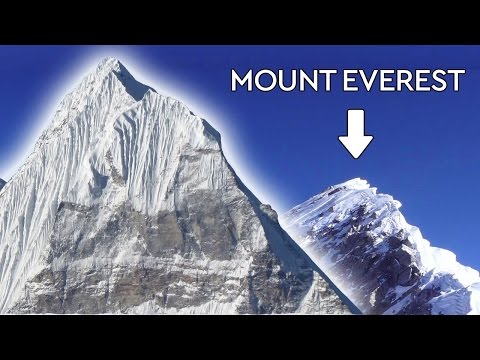
When asked about the tallest mountain in the world, most people would instantly respond with “Mount Everest.” Standing at a majestic 8,848 meters (29,029 feet) above sea level, Mount Everest is indeed the highest point on Earth’s surface when measured from sea level. However, discussions around “the tallest mountain” can get surprisingly complex once we delve into different criteria for measuring mountains.
### 1. **Tallest from Base to Peak: Mauna Kea, Hawaii**
One common misconception is that Mount Everest is also the tallest mountain from base to peak. However, when measured from its underwater base to its summit, Mauna Kea on Hawaii’s Big Island exceeds Everest. Mauna Kea only rises 4,207 meters (13,803 feet) above sea level, but when considered from its base on the ocean floor to its peak, it stretches up to about 10,211 meters (33,500 feet), making it substantially taller than Everest by this measure.
### 2. **Tallest Above Sea Level: Mount Everest**
As stated earlier, Mount Everest holds this title and it’s probably what most people mean when they ask about the tallest mountain in the world. Its height of over 29 thousand feet has challenged and fascinated climbers for decades. It remains a formidable and dangerous peak because of its height and extreme weather conditions.
### 3. **Largest Mountain by Volume: Mauna Loa**
Another fascinating aspect of measuring mountains comes when considering overall volume and mass. Mauna Loa in Hawaii is not just one massive volcanic mountain; it’s also considered the largest single mountain mass in terms of volume and area covered on Earth’s surface. This giant covers half of the Island of Hawaii and has an estimated volume of approximately 75,000 cubic kilometers.
### 4. **Debunking Myths: The Olympus Mons**
When expanding our scope beyond Earth into our solar system for a fun comparison—Mars hosts Olympus Mons, which dwarfs all mountains within our planet both in height and size base-to-peak at a towering 21 kilometers (13 miles). Of course, planetary geography plays by different rules given variations in gravity and atmosphere.
### Conclusion
So what’s really the tallest mountain? It depends on how we choose to measure tallness:
– If you’re talking about height above sea level: **Mount Everest**.
– If you’re referring to total height from base-to-peak: **Mauna Kea**.
– If considering overall size including mass and volume: **Mauna Loa**.
Understanding these differences enriches our knowledge about Earth’s geography and highlights how diverse our definitions can become depending on perspective—showcasing once more that size isn’t always what it seems depending on where you start measuring!
